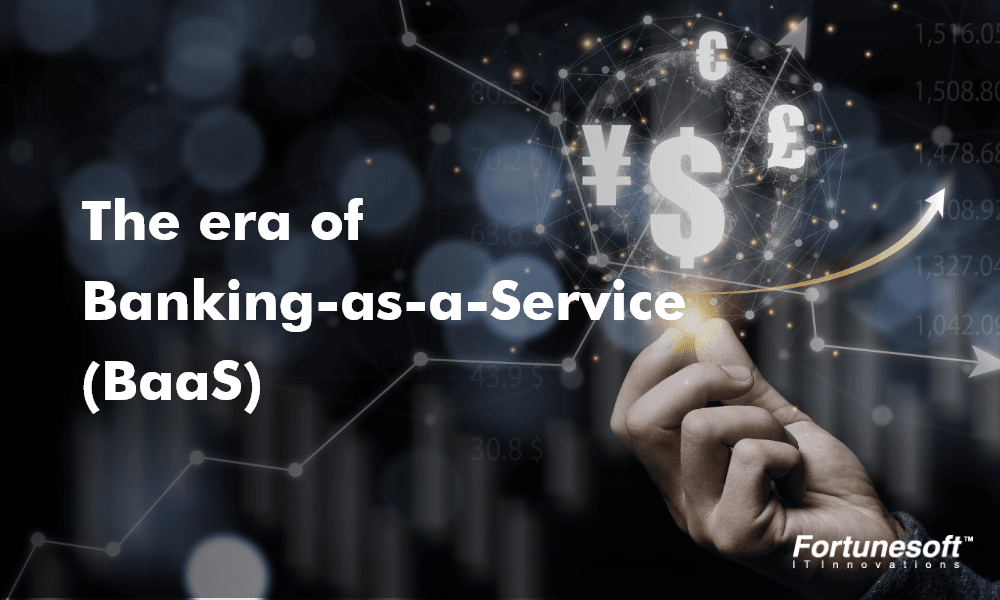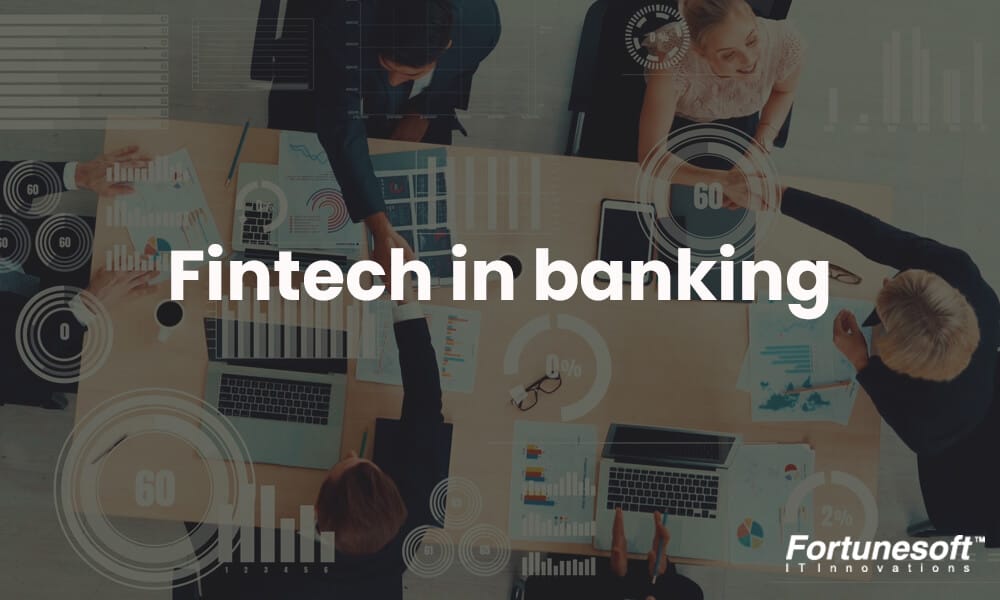 By Jeevan Babu October 6, 2020 20 min read
By Jeevan Babu October 6, 2020 20 min readHow to choose a secure tech stack for your fintech application development?
Are you someone who desires to build a top-notch fintech product but is finding it hard to decide upon the right technical stack? Corporates from non-technical backgrounds can resonate with this situation.
To power your application, you need to select the tech stack, which is a hard decision. Since the web is loaded with multiple options to choose from, if you are non-technical, these options become a technical repository confusing you more. Moreover, you might be scared of committing mistakes by selecting the wrong language or framework for your FinTech application which, in turn, may lead to dire consequences in the long run. To avoid any kind of failures, they often ask questions like:
Which programming language is best suitable for my product development?
Which framework shall I choose?
What is the perfect front-end option?
Which database shall I use?
Is self-hosting better than Amazon AWS, Microsoft Azure, or Google Cloud?
Clubbing these questions and a few key factors together are helpful for narrowing the options down to a manageable set of technologies.
Here is a quick guide that would help you to analyze, evaluate, and choose the right tech stack for your FinTech product development.
Criteria for Selecting the Tech Stack
While developing a fintech product, you should keep in mind the purpose of developing the product and how it will be serving your customers. This is crucial because the technical stack that you will be choosing will impact the development process and the user experience.
Since you are developing a fintech product, you have to calculate the load that the fintech application will be bearing with respect to the financial service it will be providing. Likewise, if you want your fintech application to be highly responsive, then your technical stack should possess low latency requirements.
Depending upon the financial services you aim to provide to your customers, the technical stack will differ. Let us go through some of the most common criteria to select a tech stack for your fintech application development.
Project scope, type, and complexity: The project scope includes a list of project goals, features, functionalities, costs, deadlines, and deliverables. Depending on the complexity of a project, it has three parts-simple, mid-level, and complex. Simple projects focus on custom solutions. Mid-level projects house more functionalities that could be built with the help of various frameworks. Complex projects are more on having complex features and integrations. They involve various programming languages and technologies during their development process.
Open Source Libraries: Open source libraries play an important role due to their reliability, quality, security, stability, adaptability, flexibility, freedom, and support from a large community. Open source libraries and software are buzzing around due to their customization and debugging capabilities providing a lot of possibilities for the companies and the app and web developers.
Availability and Cost of specialists– Even if you have the right tech stack, your FinTech application can’t be built without a developer. Therefore, the availability of a developer with domain expertise is required for faster development. Depending on the developer’s expertise, the complexity of the project, and the year of experience, the cost of hiring a FinTech developer will vary. Sometimes, it varies as per the location and conditions they have to work on.
Speed of development: If you want to stay ahead of the competition, you need to get your application developed and released at the earliest. To have your FinTech application get developed with lower costs, you need to choose a technical stack that will develop the application with the least turnaround time.
Integration: The tech stack that you are looking for should be capable of seamlessly integrating third-party APIs into the application. Third-party integration capability is important in the tech stack you choose for integrating the features into your web or mobile application without any hassles. With integrating third-party APIs, you will experience a lot of tasks getting easier and saves a lot of time and money as well. With customized API solutions and being highly compatible with most of the technologies, API integration plays an important role while choosing a tech stack for your business.
Security: The biggest challenge for any financial business or digital platform is protecting their financial services from cyber threats. Thus, the tech stack that you are looking up to should be secure enough to prevent your application from threats and vulnerabilities. Remember, every technology comes with its own pros and cons.
Scalability: While developing a FinTech application, you need to check whether the technology, architecture or platform you have used to develop is capable of coping with the increased number of users and is flexible enough to add new components in the application without affecting the performance of the app.
Easy to test: It is always good to opt for a test-driven development process that helps in developing a bug-free and high-quality code.
DevOps: With DevOps, the productivity of your business and IT teams increases. It helps in saving huge maintenance and upgrade costs by eliminating unnecessary expenditures. DevOps is known for its easy replication and faster delivery with improved quality. Moreover, DevOps boosts reliability and reusability of all the components of the system.
Maintenance cost: Developing isn’t the only thing where you have to calculate the costs. You have to estimate the maintenance cost as well. It is recommended to opt for open-source technologies. There are no restrictions to upgrade and modify and it costs less as well.
Documentation and Developer community: Having good expertise in their domain is essential because coding is difficult and they may get stuck if they don’t have the right knowledge to apply and resolve the issues. Developer community helps developers to stay updated with their domain expertise about the updates, innovations, and challenges. This helps the developers to grow and build skills to brush up their ways to solve problems in a better way. It is desirable to have good documentation skills so that during the development process they can track all the aspects.
Fault Tolerance: The tech stack that you choose should support fault-tolerance. A software that continues its operation despite any software or hardware fault is said to be a fault tolerance software. This criterion should be fulfilled as a good programming language makes it easy to write codes for fault-tolerant distributed software.
While planning for your FinTech product, you should know the size of the project that you aim to develop. The larger the size, the bigger the tech stack you will require. There might be a requirement for developing a complex portal. This may lead to the usage of several languages. There are situations when only one programming language won’t be able to solve the issue.
FinTech application development is often very large. Therefore, they are divided into different parts. Every part is assigned to various teams working on different servers and domains with various technologies. One such example is Google. We are aware of how big Google is. Different parts of Google are programmed using C/C++, Python, Java, JS, and so on. Moreover, it keeps on innovating new languages for making programming more concise and easy with keeping in mind the development cost and the time to market.
Aspects to consider while choosing the right technology stack for developing your FinTech application
Architecture
Developing a fintech app involves requirements from a lot of stakeholders and comprises a number of elements. An architecture decides how these components will be organized and how they will be communicating with each other. An architectural pattern should be decided on the project requirements, the type of application, and the dependencies.
Often there are questions that raise our brows. For example, the question of whether a wrong choice of technology is capable of ruining the project or not. This controversial question creates a lot of debate and confusion.
Actually, a project fails due to wrong architecture solutions. There are situations when one part of the application demands, say large data processing and the other part demands, say security. In this case, an application built using a single technology or language will create too many complexities. This leads to the failure of a product due to huge codebases and inflexibility, as in case of Monolithic architecture.
While deciding on the programming languages for your FinTech application, the architecture on which your FinTech app will be built influences the language that has to be chosen.
If you opt for microservice architecture, you will witness a diversity of technologies. Various technology experts will work on your FinTech app using the best tool for each service. Isolation and resilience make microservice very profitable as failure of a single component doesn’t hamper the performance of the entire application.
In a microservice architecture, the application is structured as a collection of loosely coupled services. In other words, an application having a microservice architecture has a set of small services that can be independently deployed and can be written in various languages. A better way to understand the importance of choosing microservice architecture, for example, one part of the application demands the processing of a large amount of data. Here the app developers choose Python. Another part of the application has a requirement for the proof of concept and, thus, Ruby becomes an ideal choice. Another part demands stability and, therefore, it is ideal to write that part of the application in Java. Therefore, with microservices, choose a language where it fits the most.
Microservices provide flexibility in using technologies as it includes the involvement of multiple teams with various expertise. Microservice architecture is an ideal choice if you are looking for a cheap expansion and maintenance for a longer run. Moreover, microservices are known for its simplicity and capability to increase the productivity and speed of the application.
Scalability is another key feature of microservices where the development team can scale up or down as per the requirements for the particular element.
Simply depending on the standard firewall on the network parameter is not enough for safeguarding the entire FinTech application architecture. With microservices, a more robust application can be thought of due to the involvement of multiple layers of security controls. This makes Microservices as one of the ideal choices for a FinTech application.
In recent years, serverless has emerged as a promising cloud-based technology model for the fintech app development and software architecture horizon.
If you are looking to reduce the infrastructure cost but without compromising provisions for technological advancements, then serverless is for you!
Due to its economic-pay-per-model, serverless isn’t bound to only technology verticals. It’s being adopted across all verticals and production levels. Right from startups to large enterprises, serverless has proved a boon in terms of scalability, shorter time to market, and cost-reduction. The adoption of serverless architecture has broadened the scope of IT architectures in the domain of Function-as-a-service.
The majority of operations and task management is handled by the serverless providers and companies. You are solely responsible to employ a skilled DevOps team that has the flair to seamlessly manage end-to-end workflow in the enterprise.
So what is the role of the NoOps IT environment?
This automated environment provides added value to the complete production and delivery cycle.
The key benefit of adding cloud providers as your virtual team, you don’t need to search for tech experts and expand your team. All you need to concentrate is on the value creation by developing new capabilities and growing your business.
In a nutshell,
Why do you need a serverless architecture for your fintech application?
The following are the competitive advantages of opting for a serverless architecture:
1. Improved deployment
2. Flexibility
3. Auto-scalable
4. Smooth interoperability of data
5. Minimized latency
6. Cost-effective
Programming languages
While choosing the right tech stack for your product development, the second most important question that gyrates around us, “Which programming language is best suitable for my project?”
Here are some popular programming languages worldwide.
Most used programming languages in 2020
Here’s a quick go through of how you can select the programming language for your fintech product development.
If you are interested in building your application from scratch, a pure programming language is what you need. Some of the top sites that are built with pure programming languages are Amazon, Facebook, Twitter, YouTube, and so on. Some of the trending programming languages are Python, Java, Go, R, and so on.
FinTech applications are mostly built using Python due to its benefits like open-source, extensive library support, memory management, highly scalable in spite of complex applications, focuses on code readability, capacity to build prototypes, vast community support, and highly supportive for multiple platforms and systems.
Developing your FinTech application with Python accords your business with a user-friendly experience in addition to being highly productive, and within the budget solution.
Another popular language is Java. Due to its security and portability capacities, Java is immensely popular in the FinTech domain.
With code reusability, rich library, and efficiency to its credit, C++ is one of the most common languages in the FinTech industry. C++ is an ideal choice if you are looking for advanced computations and processing multiple operations simultaneously.
Other programming languages whose benefits can be leveraged are C#, Ruby, Erlang, Haskell, Clojure, and C.
Databases
A database is required to manage the increasing digitalization of the financial services to reach a broader spectrum of audiences. The more the traffic, the more the FinTech application has to increase the breadth and depth of information. Therefore, a digital banking application requires a database that is capable of handling all these increasing requests quickly and securely.
As per statista, the popular databases are illustrated in the graph below.
Popular databases for 2020- A report by Statista
In other words, any FinTech application requires a database that is capable enough to handle heavier workloads with high speed in addition to being transactional.
The basic requirements for an ideal database are:
- The users should be able to view all their online bank accounts.
- The users should be able to check their balances whenever they want.
- Full transaction history should be available to them.
- The users should get a clear and precise view of their individual transactions.
- Payment Scheduling
- Scheduling and making transfers
FinTech applications demand a fast, secure, reliable, and transactional database that satisfies the ACID properties and makes sure that all the actions are at the right time and place.
The most common databases used by multiple banks and fintech institutions are:
Oracle- Due to its high performance and portability capacities, Oracle database is widely used. Other benefits of using Oracle are fault tolerance, wide market presence, on-line backup and recovery, cursor support for easing programming and boosting high performance, multiple database support, and integrity.
DB2 by IBM- DB2 is stealing hearts of financial institutions due to its tremendous capacity of accommodating larger database files, seamless integration, high performance, and self-service access.
Apache Cassandra- The main benefit of using Apache Cassandra is it’s elastic scalability making you add multiple servers without much hassle. This accords your fintech application with 0 downtime. Other than this, Cassandra follows a peer-to-peer architecture resulting in lesser failures, backup and recovery competencies, and analytics using Solr, spark, Cloudera, and Hadoop.
PostgreSQL- Being one of the major players in the open source database world, PostgreSQL comes with benefits like satisfies ACID properties and highly transactional, diverse indexing techniques, diverse replication capabilities, full-text search, diverse extended functions, and diverse community.
MongoDB- If you desire to have a highly scalable model, then MongoDB is an ideal choice. It is a schema-less database eliminating the need for schemas. MongoDB supports document query language. It has the ability to derive document-based data models and stores the data in the form of Binary JSON, ruby hashes, etc. Other benefits of MongoDB to make it a popular choice for developing FinTech applications- secure, enables faster access, enables search by regex and fields, and the capability for Sharding.
Hosting Platforms
The next important thing to consider is the hosting platform for your FinTech application. The two most important factors that you should consider while deciding upon a hosting platform is the reliability and privacy of the data that you want to provide.
When you say reliability, you need to analyze the sort of reliability you are planning for your application to offer your customers. If you have the desire to have maximum uptime then free hosting isn’t a great idea to go for first place!
Similarly, if you are concerned about the security of the financial data of your customers, read all the terms and conditions of your hosting platform and what exactly they do with the data that are stored in their servers. Don’t just blindly agree to the terms and conditions they mention.
A shared or reseller hosting may not be suitable if privacy is a major concern as most of them share vulnerabilities with the resources. This welcomes unwanted hijacking trials on the data you are planning to protect.
Since reliability and privacy are the two prime concerns, it is ideal to opt for HIPPA/PCI compliant dedicated environment(VPS or standalone servers). The benefits you can leverage from such hosting platforms are:
- Maximum uptime
- Full privacy
- Reduction in data breaching
- Ensures confidentiality, integrity, and availability.
Till now it is expected that you have buckled up to start with your FinTech app development after getting a clear idea of the factors you need to consider.
In a nutshell
If you want to develop a robust product for financial services, the requirements for a tech stack should revolve around, flexibility, scalability, security, and fault-tolerance. Though it is advisable to opt for development from scratch rather than utilizing any ready-made solutions as they have their own set of cons, hidden flaws, and bumps throughout the process, consulting a FinTech application development company will always be a good catch. Developing your project from scratch is one of the easiest and cost-effective solutions where you will get all the features tailored to your business requirements.
Author Bio


 Facebook
Facebook Whatsapp
Whatsapp LinkedIn
LinkedIn Pinterest
Pinterest















 Start Chat
Start Chat